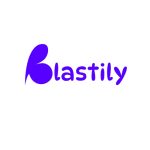
AI Marketing
Everybody’s talking about AI marketing automation — but let me ask you some real questions:
Are you collecting data?
If the answer is “sort of” or “not really,” then that’s your first roadblock. AI can’t automate what you don’t track. Data is the fuel. Without it, all the talk about “AI marketing” is just noise.
In this guide, I’ll walk you through exact steps you can take today to get your AI marketing automation moving in the right direction — plus how Blastily can help you put part of it on full autopilot.


Step 1: Collect Data — and Collect It Intentionally
Before AI can work for you, you need to give it something to work with.
Ask yourself:
Are you collecting email addresses from every sale, inquiry, or download?
When clients pay invoices, do you store their contact info in one central system — or is it scattered across emails and spreadsheets?
Are you tracking purchase history and interaction history?
Practical move today:
Create a simple lead capture form on your website and social media.
Make sure every offline invoice, email inquiry, and customer chat gets added to your database.
Use tools like Google Forms, Typeform, or a website form that connects directly to your CRM.
Step 2: Organize & Segment Your Data
Collecting data is one thing. Segmenting it is where the AI magic happens.
Here’s how:
Upload your customer list into a CRM like HubSpot, Zoho CRM, or ActiveCampaign.
Create segments (tags) such as:
Past buyers
Leads who have inquired but never purchased
VIP/high-value clients
People interested in a specific product or service
Why this matters:
Once segmented, AI-powered tools can personalize your marketing. For example, HubSpot can trigger different email sequences depending on a customer’s tag.
Step 3: Automate Simple, High-Impact Actions
Start with small automations that bring quick wins.
Examples you can set up today:
Email follow-ups: If a customer hasn’t purchased in 30 days, send them a “We miss you” offer.
Lead nurturing: If someone downloads a free guide, trigger a 3-email sequence ending with a product pitch.
Abandoned cart recovery: Use Shopify, WooCommerce, or Klaviyo AI to send targeted reminders.
Step 4: Personalize with AI Tools
Once your data is organized, AI can make your messages smarter.
Example:
Nike uses AI to recommend products based on browsing and buying habits. You can do the same with Klaviyo’s AI product recommendations or Shopify Email personalization.
Service providers can send AI-triggered tips or reminders based on client history (e.g., accountants sending tax prep tips in March).
Step 5: Learn from Real Campaign Examples
Here’s how other brands do it — and how you can adapt their ideas:
| Big Brand Example | How You Can Adapt It Today |
|---|---|
| Netflix’s chatbot for “Stranger Things” kept fans engaged in character. | Use ManyChat or MobileMonkey to create a bot that answers client FAQs instantly. |
| Coca-Cola’s AI-generated bottle labels went viral. | Use Canva’s AI tools to create personalized graphics for your top customers. |
| Omneky runs AI-generated ads across platforms. | Use AdCreative.ai to generate and test multiple ad versions automatically. |
Step 6: Automate Your SEO Too — and Put It on True Autopilot
AI automation isn’t just for email sequences or ad targeting — it’s a game changer for SEO. Without consistent, high-quality content and backlinks, your brand will struggle to rank and get found.
This is where Blastily’s SEO Subscription Bundle changes the game:
With our SEO Subscription Bundle, we write and publish blogs about your brand every single month — so your online presence never goes stale.
These blogs are fully optimized for the exact keywords your audience is searching for, ensuring you rank for the terms that matter most.
Every month, we also deliver 500 authority backlinks to strengthen your site’s credibility and search visibility.
You don’t even have to think about it — every month, your subscription automatically keeps your content and link-building machine running.
This isn’t just good for Google — consistent visibility also means ChatGPT and other AI models are more likely to recommend your brand when people search or ask about your industry.
With this in place, you’ve effectively put your AI marketing on autopilot:
Fresh blogs. Strong backlinks. Rising rankings. AI and search engines sending traffic your way 24/7.
Step 7: Review, Measure, Improve
Automation doesn’t mean “set it and forget it.”
What to do monthly:
Check open rates, clicks, and conversions from your automated campaigns.
Review your SEO blog performance — are you ranking for more keywords?
Feed new customer data into your CRM to keep your AI tools learning.

Your Next 7 Days
If you want your AI marketing automation moving in the right direction this week:
Centralize all customer data into one CRM.
Tag customers into at least 3 segments.
Set up one basic email automation for a segment.
Create one AI-personalized message for that group.
Subscribe to Blastily’s SEO Bundle to start automated blog publishing and backlink building.
Track the first week’s results.
Refine based on what works.
Final Thought:
Big brands have entire teams running their AI marketing — but with the right tools and a partner like Blastily, you can get the same momentum without the overhead. Start with your data, build your automations, and let our SEO subscription keep your brand visible 24/7.





I love this theme. Sometimes it’s difficult to work with some themes, because even if they are created with Elementor, you can’t edit all the things with Elementor. Is not the case of Bili. All is created with Elementor and you don’t need Elementor Pro. Definitely recommended.
They have really taken their time to work appearance of the theme, also, they have a very intereactive client assistance service.